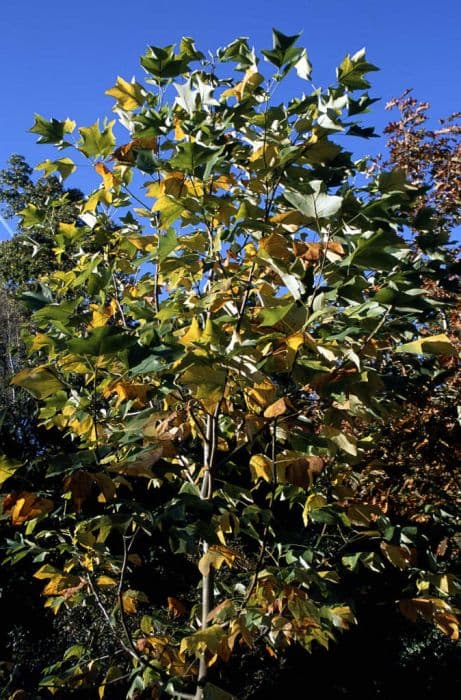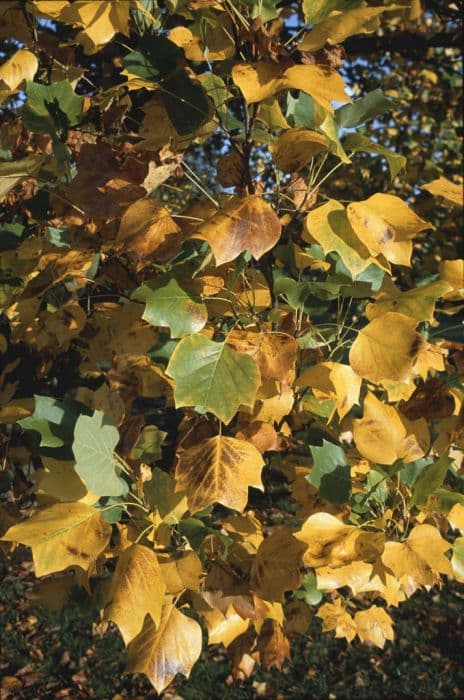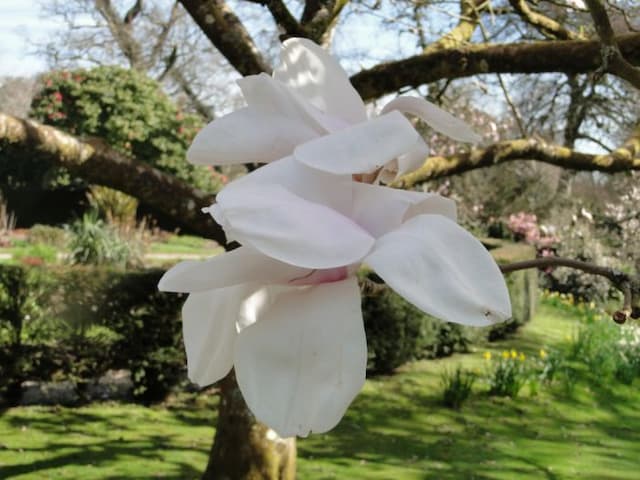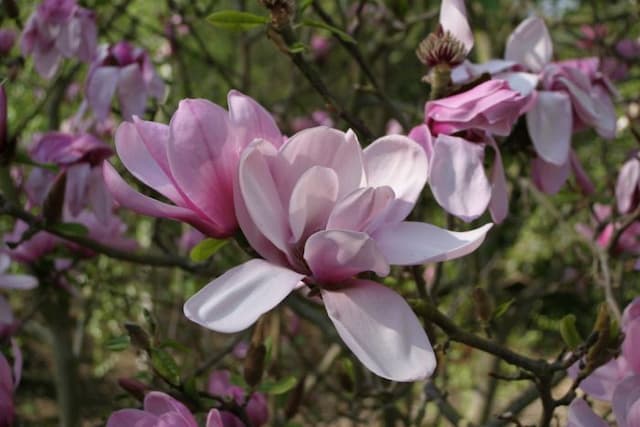Evergreen magnolia 'Exmouth' Magnolia grandiflora 'Exmouth'

ABOUT
'Exmouth' is a large evergreen shrub or tree with glossy oblong leaves to 25cm in length, brown-felted beneath. Flowers to 25cm in width, bowl-shaped, cream and heavily scented. Flowers when young
About this plant
 Names
NamesFamily
Magnoliaceae
Synonyms
Southern Magnolia, Bull Bay, Evergreen Magnolia, Exmouth Magnolia
Common names
Magnolia grandiflora 'Exmouth'.
 Characteristics
CharacteristicsLife cycle
Perennials
Foliage type
Evergreen
Color of leaves
Dark green
Flower color
Creamy white
Height
60-70 feet (18.3-21.3 meters)
Spread
30-40 feet (9.1-12.2 meters)
Plant type
Tree
Hardiness zones
7
Native area
Southeastern United States
Benefits
 General Benefits
General Benefits- Aesthetic Appeal: Magnolia grandiflora 'Exmouth', or Southern Magnolia, is known for its large, creamy-white flowers that are visually striking and have a lemony fragrance, enhancing the aesthetic appeal of any landscape.
- Shade and Shelter: With its dense foliage and broad canopy, the Southern Magnolia provides ample shade and shelter for wildlife and humans alike, making it a valuable tree for hot climates.
- Year-Round Interest: Evergreen by nature, the Southern Magnolia maintains its glossy green leaves throughout the year, offering persistent visual interest even in the winter months.
- Privacy Screen: Due to its dense growth habit, Southern Magnolia can act as an effective natural privacy screen, blocking unwanted views and creating a sense of seclusion.
- Sound Barrier: The thick foliage of the Southern Magnolia can also serve as a sound barrier, helping to reduce noise pollution in urban and suburban settings.
- Low Maintenance: Once established, Southern Magnolia trees are relatively low maintenance, requiring minimal pruning and being resistant to many pests and diseases.
- Wildlife Habitat: Southern Magnolias provide food in the form of seeds for birds and mammals, and their flowers are attractive to pollinators such as bees.
- Soil Stabilization: The extensive root system of the Southern Magnolia helps to stabilize the soil, preventing erosion and improving soil quality.
 Medical Properties
Medical Properties- Anti-inflammatory: Magnolia grandiflora 'Exmouth' is known for its anti-inflammatory properties derived from the bark and leaves.
- Antioxidant: The plant contains magnolol and honokiol which have antioxidant effects.
- Anxiolytic: Some studies suggest that compounds found in Magnolia may help alleviate anxiety.
- Anti-cancer: The bark extract has been studied for its potential anti-cancer effects.
- Antimicrobial: Magnolia grandiflora 'Exmouth' is reported to have antimicrobial properties which may be used to treat certain infections.
 Air-purifying Qualities
Air-purifying QualitiesThis plant is not specifically known for air purifying qualities.
 Other Uses
Other Uses- The leaves of Southern magnolia can be used in floral arrangements as they stay green and fresh for a long time, adding a glossy, evergreen presence to bouquets and wreaths.
- The strong wood of Southern magnolia is occasionally used in cabinet making or for veneers, offering a smooth texture and a nice polished finish.
- The bark of this tree has been traditionally used for garden mulching, as it decomposes slowly and provides nutrients back to the soil.
- The large, leathery leaves can be used as a natural polish for wooden furniture, almost like a chamois cloth, imparting a shiny appearance.
- Southern magnolia cones, once dried, can be used in craft projects or as natural ornamental elements in home decor, especially during the festive season.
- The dense foliage provides excellent shelter and nesting sites for birds, making it a valuable plant for supporting local wildlife ecosystems.
- The tree can be trained and shaped into a natural privacy screen or hedge, due to its dense foliage and relatively fast growth.
- The fallen petals of Southern magnolia, with their thick, waxy texture, can be used to create eco-friendly outdoor walkways that decompose over time.
- Southern magnolia's large seeds are sometimes used in educational projects to show seed germination and plant growth processes to students.
- Its wood shavings can serve as a base for natural insect-repelling sachets when combined with other aromatic herbs like lavender or eucalyptus.
Interesting Facts
 Feng Shui
Feng ShuiThe Southern Magnolia is not used in Feng Shui practice.
 Zodiac Sign Compitability
Zodiac Sign CompitabilityThe Southern Magnolia is not used in astrology practice.
 Plant Symbolism
Plant Symbolism- Perseverance: The magnolia tree is known to be a hardy plant that can grow in tough conditions, symbolizing endurance and strength.
- Dignity: With its large, impressive blooms, the magnolia represents nobility and poise.
- Femininity: The magnolia's delicate and fragrant flowers have long been associated with feminine beauty and gentleness.
- Love of Nature: Because magnolias are often found in natural settings, they can symbolize a person's love for the outdoors and the environment.
- Longevity: Magnolias are known to live for many years, making them a symbol of longevity and endurance over time.
 Water
WaterSouthern Magnolias, including the 'Exmouth' variety, prefer evenly moist soil. Watering should be done deeply, ensuring that the soil is moistened to a depth of 8 to 12 inches which encourages deep root growth. Young trees typically need watering once a week during dry periods without rainfall, with 10 to 20 gallons depending on the size and soil conditions. Once established, they are more drought-tolerant and may require less frequent watering. Adjust the frequency and amount during extreme heat or drought, ensuring the plant receives adequate hydration without waterlogging.
 Light
LightSouthern Magnolias require full sun to partial shade to thrive. They perform best when they receive at least four to six hours of direct sunlight daily. A spot that offers morning sunlight with some afternoon shade is ideal, particularly in hotter climates, to protect them from the intense sun in the later parts of the day. Avoid deep shade locations, as this can hamper flowering and overall vitality.
 Temperature
TemperatureSouthern Magnolias are hardy in a range of temperatures, typically from 10°F to 100°F. The ideal temperature for this plant is between 70°F and 90°F. They can withstand brief periods of colder temperatures down to about 10°F but should be protected from prolonged exposure to extreme cold. Providing a location sheltered from harsh wind helps to minimize temperature stress.
 Pruning
PruningPruning of Southern Magnolias is typically carried out to maintain shape and remove any dead or damaged branches. The best time to prune is in late winter or early spring before the new growth starts. Light pruning can also be done in summer after the tree has finished blooming. Pruning every 2 to 3 years is usually sufficient, although young trees may benefit from more frequent pruning to establish a strong structure.
 Cleaning
CleaningAs needed
 Soil
SoilSouthern Magnolia prefers well-draining, rich soil with a pH of 5.0 to 6.5. For the best soil mix, combine loamy soil, sand with some compost or well-rotted manure to enhance fertility.
 Repotting
RepottingSouthern Magnolia does not need frequent repotting; it can be repotted every 3 to 5 years or once it outgrows its current container.
 Humidity & Misting
Humidity & MistingSouthern Magnolia thrives in average humidity levels, typical of outdoor conditions, without the need for special humidity adjustments.
 Suitable locations
Suitable locationsIndoor
Ensure bright, indirect light and ample space for growth.
Outdoor
Plant in a sunny spot with well-draining soil.
Hardiness zone
7-10 USDA
 Life cycle
Life cycleThe life cycle of the Southern Magnolia 'Exmouth' begins with germination, where the seeds, generally dispersed by animals or gravity, sprout in moist, well-drained soil in partial to full sunlight. As a seedling, it slowly establishes a strong root system and begins to grow glossy, evergreen leaves. The juvenile phase can last several years before the tree matures and is capable of flowering; this species is notable for its large, fragrant white flowers that bloom in late spring to early summer. After pollination, typically by beetles, it produces cone-like fruit with bright red seeds that are again dispersed. The Southern Magnolia 'Exmouth' then enters a period of vegetative growth each year, extending its branches, leaves, and roots, and thickening its trunk until it reaches maturity, which can entail a height of 60 to 80 feet. This cycle of flowering and fruiting continues annually throughout the tree's long lifespan, which can extend beyond a century under optimal conditions.
 Propogation
PropogationPropogation time
Spring to Summer
Propogation: The Southern Magnolia, or Magnolia grandiflora 'Exmouth', is most commonly propagated using semi-hardwood cuttings. This method typically takes place during the late summer, following the plant's active growth phase. To propagate by cuttings, a gardener would select healthy, semi-hardwood stems from the current year's growth. These stems should be about 4 to 6 inches long (approximately 10 to 15 centimeters). The lower leaves are removed, and the cut end is often treated with a rooting hormone to encourage root development. The prepared cuttings are then placed in a well-draining potting mix and kept moist until roots have developed, which can take several weeks to a few months. A controlled environment that maintains high humidity, such as a greenhouse or a makeshift humidity dome, significantly improves the chances of successful rooting.









